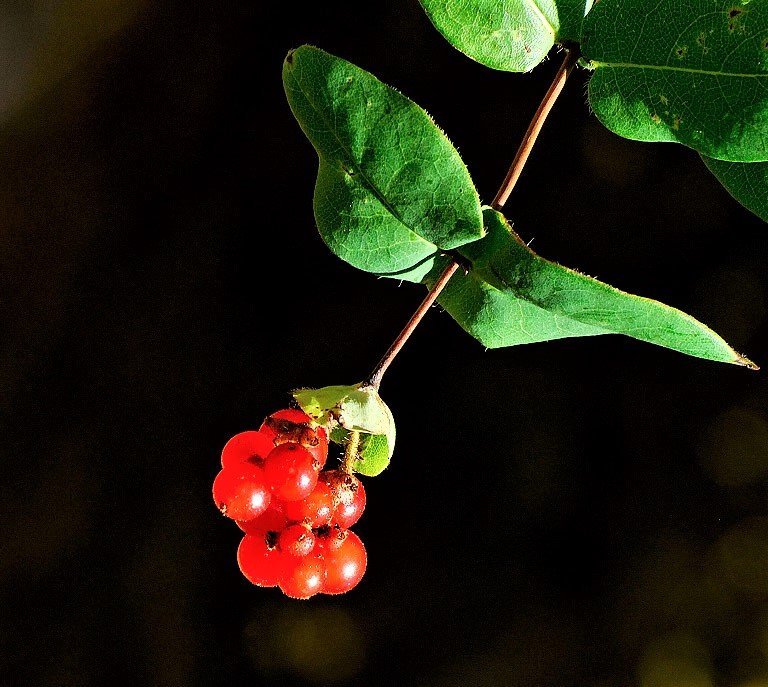Lonicera hispidula (Hairy Pink Honeysuckle)
This PNW native honeysuckle features stunning pink-purple flowers in spring and summer, followed by attractive red berries in the fall, attracting birds. The foliage is semi-evergreen and covered in small hairs — thus the origin of one of its common names.
This honeysuckles presents as a loose-growing vine or groundcover, frequently found on bluffs above marine shorelines, and making it a super revegetation plant for preventing surface erosion. It can spread 3-20 ft. as a climber, but more typically in groundcover form, depending on conditions.
Great for pollinators and native songbirds.
A highly flexible plant, can thrive equally in sun to shade, and most soils (even clay) as long as the drainage is adequate. Drought tolerant once established.
This PNW native honeysuckle features stunning pink-purple flowers in spring and summer, followed by attractive red berries in the fall, attracting birds. The foliage is semi-evergreen and covered in small hairs — thus the origin of one of its common names.
This honeysuckles presents as a loose-growing vine or groundcover, frequently found on bluffs above marine shorelines, and making it a super revegetation plant for preventing surface erosion. It can spread 3-20 ft. as a climber, but more typically in groundcover form, depending on conditions.
Great for pollinators and native songbirds.
A highly flexible plant, can thrive equally in sun to shade, and most soils (even clay) as long as the drainage is adequate. Drought tolerant once established.
This PNW native honeysuckle features stunning pink-purple flowers in spring and summer, followed by attractive red berries in the fall, attracting birds. The foliage is semi-evergreen and covered in small hairs — thus the origin of one of its common names.
This honeysuckles presents as a loose-growing vine or groundcover, frequently found on bluffs above marine shorelines, and making it a super revegetation plant for preventing surface erosion. It can spread 3-20 ft. as a climber, but more typically in groundcover form, depending on conditions.
Great for pollinators and native songbirds.
A highly flexible plant, can thrive equally in sun to shade, and most soils (even clay) as long as the drainage is adequate. Drought tolerant once established.



